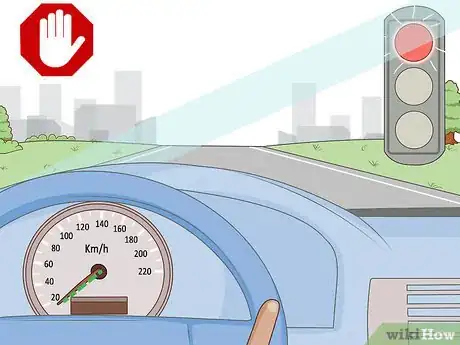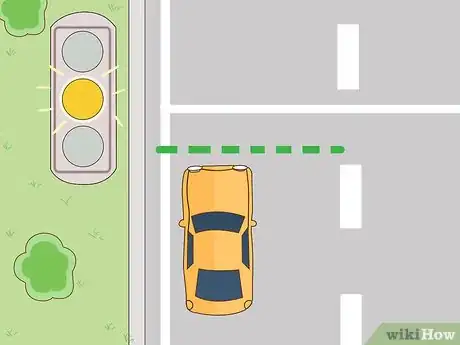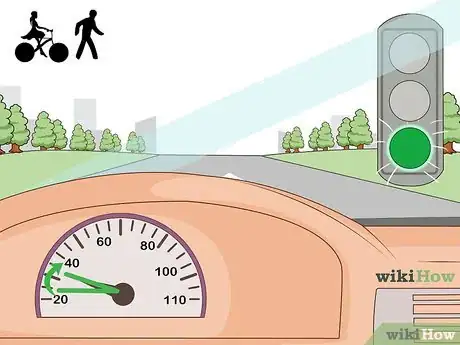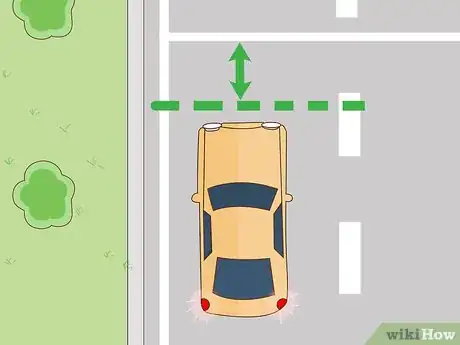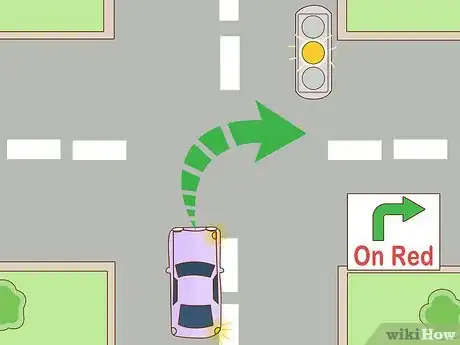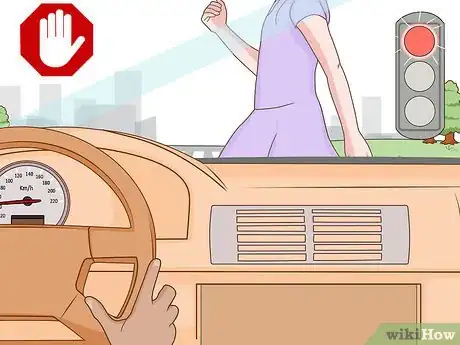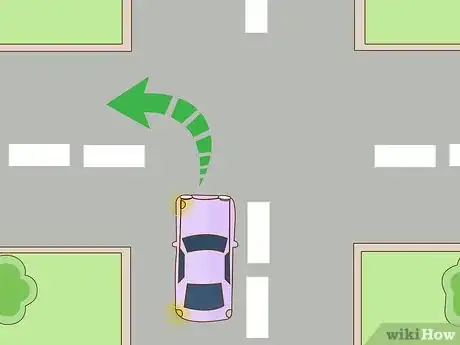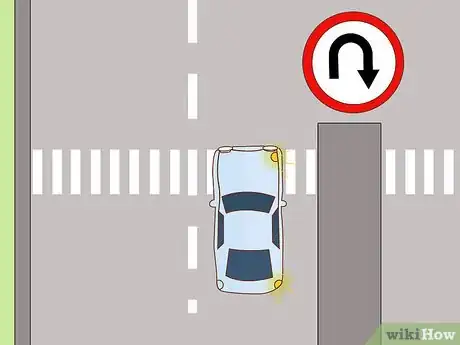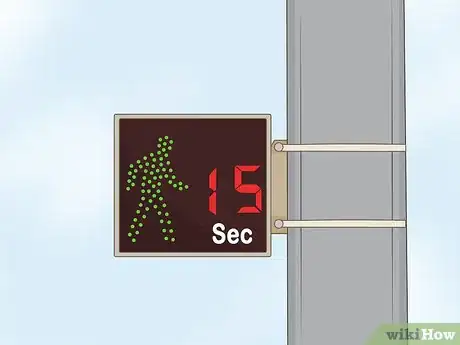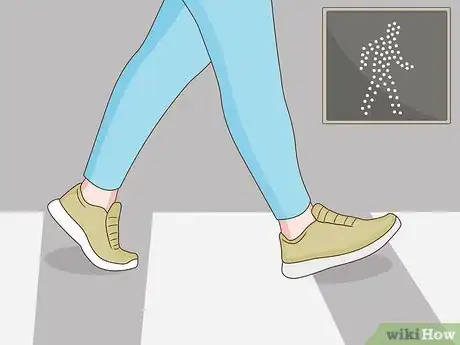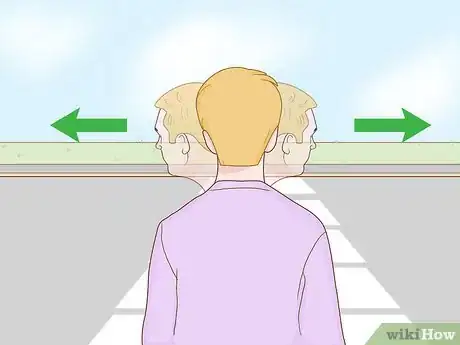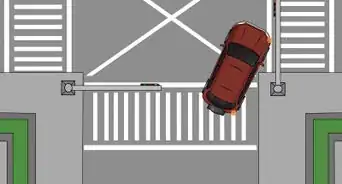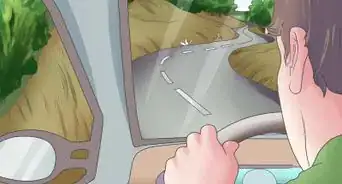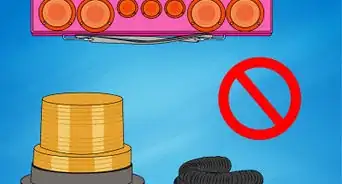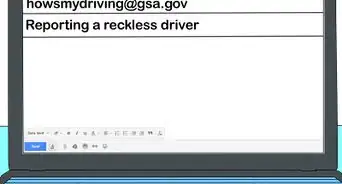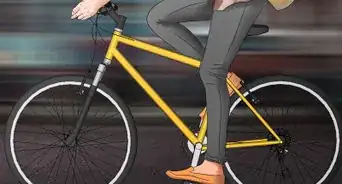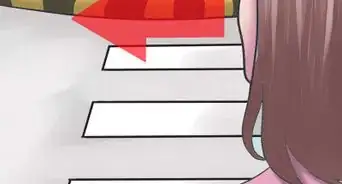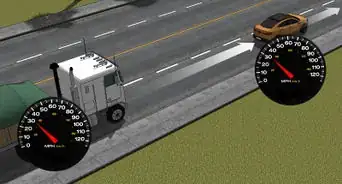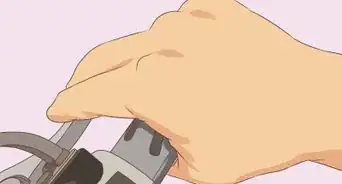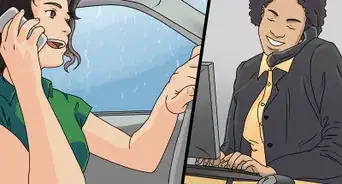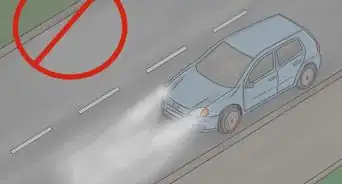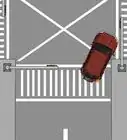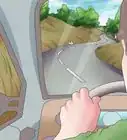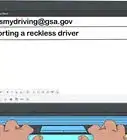This article was co-authored by Simon Miyerov. Simon Miyerov is the President and Driving Instructor for Drive Rite Academy, a driving academy based out of New York City. Simon has over 8 years of driving instruction experience. His mission is to ensure the safety of everyday drivers and continue to make New York a safer and efficient driving environment.
There are 10 references cited in this article, which can be found at the bottom of the page.
This article has been viewed 42,576 times.
Traffic lights can be a pain if you're late for work, stuck in traffic, or unable to cross the street. They’re designed to increase safety by regulating the flow of traffic, and they work much better when everyone follows the rules. Save yourself the pain of an accident by learning the basics of what to do when approaching a traffic light on foot or in a car, like stopping completely on red lights and only crossing the street in a crosswalk.
Steps
Following Traffic Rules in Vehicles
-
1Stop completely on red lights. Brake slowly and steadily. Stop far enough back that you can see the rear tires of the car in front of you.[1] Stop fully even if it is legal to turn right on red.[2] Do not try to run red lights; it is illegal and puts you at risk for accidents and traffic citations.
- Red light cameras exist at many intersections. They are used to give out traffic tickets without the presence of police.
-
2Stop on yellow lights if possible. Determine if you can stop safely behind the white line. If you will risk a rear-end collision or would stop in the middle of the intersection, keep going. If you have enough space and time to stop safely, do so.[3]
- Some intersections will have a "Prepare to Stop" sign. They will flash if the light is about to turn red.
Advertisement -
3Proceed carefully through green lights. Look for pedestrians and bicyclists before crossing. If turning without a green turn arrow, only turn when traffic has cleared. If there is a turn arrow, wait for it to turn green before proceeding.
- Do not enter the intersection until you can be certain you can clear it. If you do so, and the light turns red, you can be cited for blocking the intersection.
-
4Stop behind the white stop line. It is illegal to stop past the white line or in the pedestrian crossing.[4] If you are not the first car at the intersection, leave space between your car and the car in front of you.
-
5Turn right on red only if it is legal and safe. In some states, it is legal to turn right on red. Look both ways for pedestrians and bicyclists before turning to ensure their safety. Look for signs posted that may say “No turn on red” or “After stop, right turn permitted on red” before proceeding.[5] [6]
- Do not attempt to turn left on a red light unless you are turning onto a one-way street. Be sure to keep yourself and pedestrians safe by looking both ways before beginning to turn left onto a one-way street. In some places, it is illegal to turn left on a red light.[7]
-
6Yield to pedestrians and bicycles, even if there is no marked crosswalk. They always have the right of way. It is safer to remain stopped until the crosswalk is clear, but is not mandated everywhere.[8] In some places, you can be fined for not yielding to pedestrians or bikes in a marked crosswalk.
-
7Use your blinkers when necessary. Even if you are in a designated turn lane, you must use your blinker to signal the direction you are turning.[9]
-
8
-
9Come to a full stop if the light is blinking red or is extinguished. If the traffic light is blinking red or is not displaying any signal, you must come to a full stop. Look left and right to determine if there is any traffic crossing your way then proceed when it is safe. Blinking reds should be treated like a stop sign.
-
10Yield to traffic if the light is blinking yellow. If the traffic light is blinking yellow, determine if there is any oncoming traffic in either direction. If there is, stop before the stop line. If not, then proceed carefully through the intersection. Blinking yellows should be treated like a yield sign.
Crossing Safely As a Pedestrian
-
1Watch the pedestrian signals, not the traffic signals, when possible.[12] When it’s safe to walk, do so as quickly as possible so you are in the road for less time. When the pedestrian signal is activated, it provides enough time for you to cross the street safely, so pay attention to when it begins.[13]
-
2Cross in the crosswalk when you have a “Walk” sign or see an image of a person walking. Always cross at a corner. Most intersections have a push button to activate the walk sign.[14]
-
3Look left, right and left again before crossing. Look for turning vehicles. Some drivers don’t yield the right-of-way to pedestrians, so pay close attention before stepping into the roadway. Continue watching as you cross the street.[17]
- Don’t be distracted with your cell phone while crossing the street. Stop texting, talking on the phone or listening to music. Use all of your senses to stay safe.
Community Q&A
-
QuestionWhat can I do to reduce the chance of a red light crash?
 AasimTop AnswererYou should always be wary of other drivers or pedestrians and be prepared to stop, yield, or honk if there is danger of a collision. For example, never assume that a driver will start and end their turn in the correct lane. You should also give a quick glance to see if there is anyone that may be running the red, if you can.
AasimTop AnswererYou should always be wary of other drivers or pedestrians and be prepared to stop, yield, or honk if there is danger of a collision. For example, never assume that a driver will start and end their turn in the correct lane. You should also give a quick glance to see if there is anyone that may be running the red, if you can.
References
- ↑ https://driversedguru.com/driving-articles/drivers-ed-extras/the-simplest-safety-precaution-when-stopped-at-a-stoplight/
- ↑ Simon Miyerov. Driving Instructor. Expert Interview. 4 December 2019.
- ↑ https://driversedguru.com/driving-articles/drivers-ed-extras/what-to-do-when-the-light-turns-yellow/
- ↑ http://dor.mo.gov/pdf/Chapter3.pdf
- ↑ Simon Miyerov. Driving Instructor. Expert Interview. 4 December 2019.
- ↑ http://www.ncsl.org/research/transportation/pedestrian-crossing-50-state-summary.aspx
- ↑ https://driversedguru.com/driving-articles/drivers-ed-extras/can-you-make-a-left-turn-on-red/
- ↑ http://www.ncsl.org/research/transportation/pedestrian-crossing-50-state-summary.aspx
- ↑ http://trafficlawheadquarters.com/the-importance-of-using-your-turn-signal/
- ↑ Simon Miyerov. Driving Instructor. Expert Interview. 4 December 2019.
- ↑ https://dmv.ny.gov/about-dmv/chapter-5-intersections-and-turns
- ↑ http://publicsafety.tufts.edu/projects/pedestrian-safety/pedestrian-safety-tips/
- ↑ https://static.spokanecity.org/documents/streets/handouts/pedestrian-signals-handout-2018-01-17.pdf
- ↑ http://publicsafety.tufts.edu/projects/pedestrian-safety/pedestrian-safety-tips/
- ↑ https://static.spokanecity.org/documents/streets/handouts/pedestrian-signals-handout-2018-01-17.pdf
- ↑ http://publicsafety.tufts.edu/projects/pedestrian-safety/pedestrian-safety-tips/
- ↑ http://publicsafety.tufts.edu/projects/pedestrian-safety/pedestrian-safety-tips/
